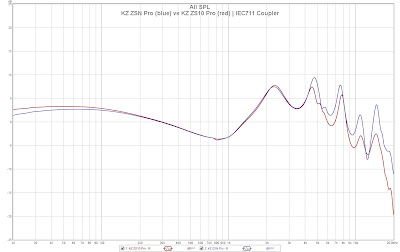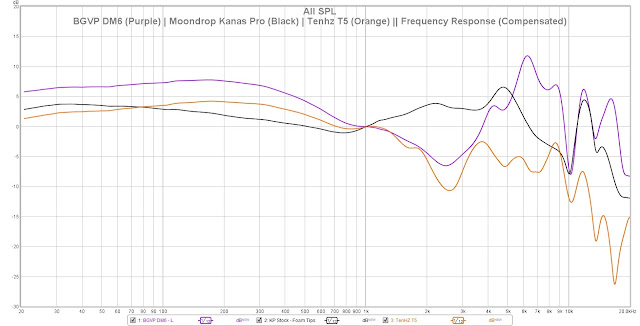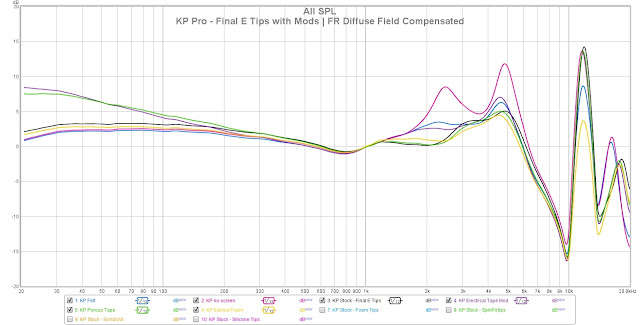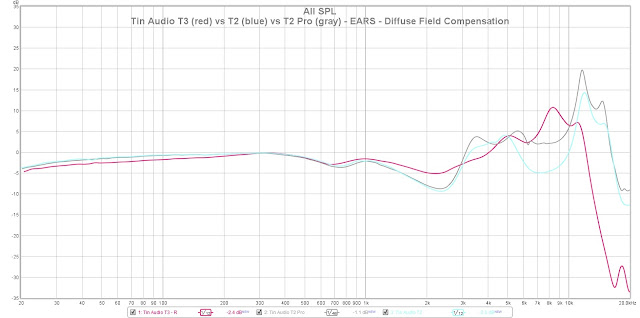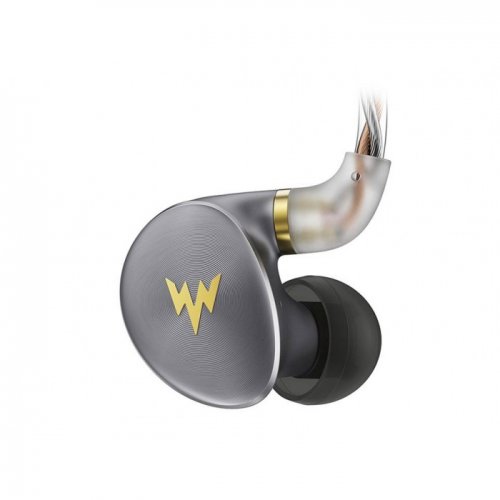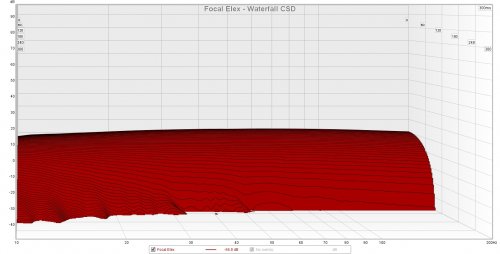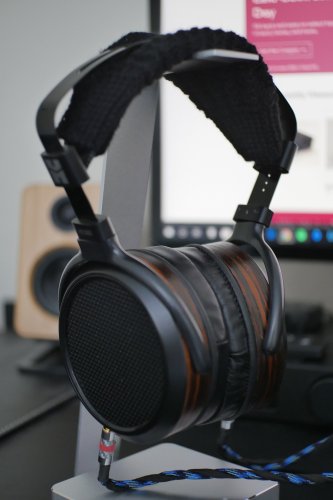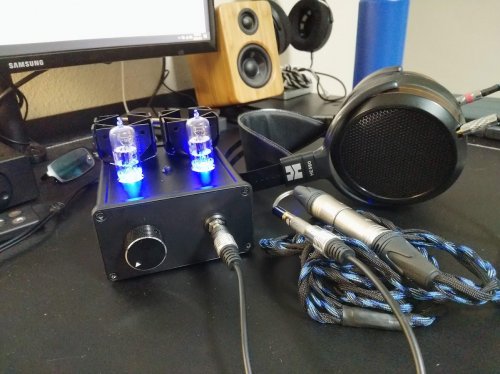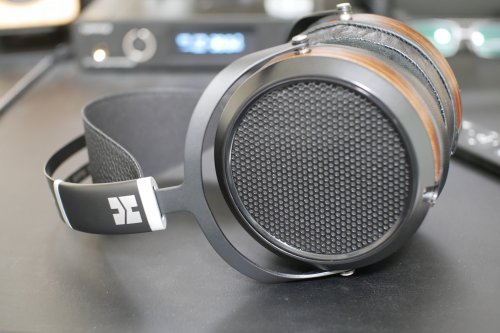
Audeze has become as household name in the audiophile headphone world with their high quality planar magnetic driver line of headphones. Their LCD series has brought elegance and beauty with high quality wood and metal parts and fancy planar magnetic drivers to the market and, even more revolutionary, is their Sine and iSine series which brings planars on the go with you, without missing a beat on sound quality and excellence.
I am an owner of these portable Sine and iSine products and I rave about them to friends. They iSine, despite, its quirky looks, is a fantastic product and priced well. The Audeze Sine on-ear portable headphone is one of the most attractive headphones on the market and has a very balanced neutral sound signature that’s fun and lively at the same time.
So, when Audeze announced the Mobius early this year, I jumped on it. I mean, it’s a (relatively) lightweight planar magnetic that has a larger driver than the Sine, and can be used on the go as a Bluetooth device, or strapped to a computer through USB and provide you 3D immersion and headtracking all for the Indiegogo price of $250? Sign me up! I was backer #211 on these and joined Team Copper.
After a couple delays, the item arrived in late August and immediately after putting them on, I was smiling. The wait was worth it. These things are for real.
Build/Accessories/etc.
The Indiegogo crowdfund price started at around $250, while early pre-orders were at $339. The MSRP price for these is now $399. With that price, the Indiegogo package came in a brown Audeze box, not the retail packaging.
Inside the box was the Stretch Goal bonus Audeze Case. This case is a bit larger than the case Audeze released for the Sine and EL-8, though made of similar materials. The case was designed to put the Mobius in sitting in worn position, instead of laying flat with cups rotated. With that, the box also has a custom cut-out padding to ensure a safe and stable ride in the case.
The case also has a netted accessory spot which was where the included cables were stored. The package comes with a USB-A to USB-C cable for connecting from a computer to the Audeze Mobius, as well as a USB-C to USB-C type for use with laptops and cell phones. In addition, a 3.5mm TRSS (4-pole) male-to-male is included for using with standard 3.5mm jacks, and the headset mic. The mic is detachable, which is a great feature.

The headphone’s exterior is entirely of plastic, but feels well built and strong. I don’t have any fear of these breaking. In fact, the headband can be twisted and manipulated quite a bit without breaking. This was demonstrated in the promo video during product launch.
Along the left cup are a series of buttons and input jacks. There is separate volume controls for the headphone and mic, with two jacks for Line-In and the detachable mic, followed by a 3D centering button. On the front of the cup, there is a power button which is also used for Bluetooth pairing, and a mic mute toggle.
Navigating through the various EQ settings, 3D modes, input modes, and other features is performed through various combinations of the buttons. For example, holding down the mic volume wheel while moving left or right, will scroll to the next EQ setting.
While, I wish the controls were a bit more simple, it’s understandable given the size and button limitations. Some other premium wireless headphones have started using touch gestures using the side of the cups like the Sony 1000X series and the B&O Beoplay H9/H9i. While they do present their own problems, it may simplify some operations.
As far as comfort goes, the headphone is very comfortable to wear for long periods of time, for the most part. The pads are soft and have good depth to them. My ears do not hit the driver inside, and the faux-leather is soft and nice. On a warmer day though, they do get a bit warm and can be uncomfortable from that standpoint.
The headband yoke has plenty of give and can rotate which helps with comfort on many head styles. At the bottom center of the headband is a padded area. While this does help with comfort on top of the head, it would have been more comfortable if this stretched across the entire length of the headband, or if Audeze employed the use of a comfort strap. For my own personal use, I am using a wool sweater headband cover that goes around the entire headband, which definitely improves comfort. The one downside is that it may get warmer faster. Maybe.
 Sound
Sound
This will be a doozy of a section. The Mobius comes with several different settings and it’s own internal amp/dac unit that can do DSP. For my primary listening, I stick with Audeze’s Default setting, as I find it the best for music. It’s what they call their “Audeze House Sound.”
The internal amp powers the headphone up to 1 Watt of power. This is well more than enough power than you should ever need. When connected to USB to my Windows 10 PC, my digital volume is set at 12.
This internal amping makes the Bluetooth experience the best I’ve ever experienced. If you’re lucky enough to have an LDAC transmitting device such as an Android phone using Oreo, or many of the new DAPs coming out on the market, you will be able to play wireless Bluetooth audio at hi-res quality. That paired with the Audeze Mobius makes you feel like your listening to wired headphones.
Other companies making wireless over-ear headphones need to take note on this. Internal amping is so key. I am always dumbfounded at why there’s such a drastic difference in sound quality when using other Bluetooth headphones wirelessly vs wired. Luckily, with Audeze’s Mobius, this is not an issue. I was extremely happy listening to LDAC Bluetooth all day long.
Note: SBC Bluetooth is another story. There is discernible difference between the two supported codecs. AAC is also supported, and is also a step up from SBC.
The next few paragraphs will go over the DEFAULT setting, and then I’ll follow-up with comparisons to the other settings.
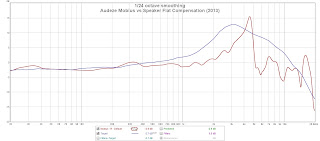

The bass on these is flat and linear with a slight hump at 30Hz. The linear planar bass response is pretty much as expected – it extends well, and has good texturing qualities and nothing sounds overly emphasized. There’s never any fear of muddiness as you move up to vocals in the mid-range.
The mids are slightly forward. I would consider them very similar to that of all the other Audeze headphones, while there is some peakiness in the upper mids and treble region. This helps give the Mobius good detail and air. This separates it from the LCD series, especially the pre-fazor LCD-2, which is relatively dark. The Mobius’s upper range is similar to what you’d hear in the Audeze Sine, which helps give it an exciting and energetic sound.
There are times when I am listening to some female vocals, and I could imagine that some people may find it harsh. I find it great. But again, if you’ve read my other reviews, I like brighter sound signatures like the HE560, The Sine, and others.
Stage width is medium, while imaging is excellent. That’s a good thing since these were made for gaming and movies. Unfortunately, my gaming life has subsided significantly over the past couple years and I have yet to really give these headphones a proper gaming experience.



With 3D and headtracking enabled, the headphones take you away from the standard 2 channel experience and into a concert hall of your choice. I find it a bit gimmicky, but it actually works, and works well. I just don’t know how much I’ll use it. But, with the app, you can control the room size. When you move the size closer to 100, you’ll feel like you’re in a concert hall. At around 35-50, it feels like you’re sitting at your desk listening to music. And at closer to 0, you’ll get some exaggerated 3D space, where a slight turn of the head will completely cut off sound on the opposite ear.
When I first put the headphones on with 3D tracking enabled, it was close to midnight. I turned up the music and I was immediately freaking out. Why? Because it was late, and I was scared I had left my speakers on and that my fiancée would come out yelling at me. But, I looked down, saw my speaker LED was off and was then just in awe. WOW! These things work!
DSP/EQs:

For music, the two main EQs are the Default and the Music settings. The default setting has good linear bass, and lots of detail due to the higher treble. The Music setting is more of a slight U-shape, with slightly elevated bass and smoother treble response. The music setting is more laid back and warm.

I have not played too much with gaming and movies on this, and that's why this review has a music tilt to it. The Gaming EQs do show some differences between one another as shown above.
Digital vs Analog:

One interesting thing I noticed was the sound quality using a digital connection (USB and Bluetooth) versus using an analog connection (3.5mm -- i.e. double amping). Because of the Audeze design, everything goes through the Mobius amp section. You cannot bypass it by using an auxiliary input. In theory, the sound should be equal no matter what given a clean source right? I haven't been able to replicate that unfortunately.
The measurement shown is the stock signature using USB-C and an analog input using my Topping DX7 DAC. While the mids and treble are identical, the bass and low mids is drastically different. The bass rolls-off early and has a mid-bass hump in measurements.
In actual listening, I have noticed that the bass signature is different. The bass using a 3.5mm connection is noticeably punchier and less extended (less rumble and fullness). Not sure what's going on here. I'll stick with digital inputs.
Comparisons:
 Vs Audeze Sine
Vs Audeze Sine

The first chart shows the differences between the Audeze Sine and the Audeze Mobius. Both of these headphones are the smallest and lightest headphones in Audeze's lineup (besides the iSine). The Mobius driver is 25% larger than the Sine's. This probably explains the differences in how they sound.
The Mobius extends lower than the Sine, which has a drop off prior to sub-bass regions. The Sine is slightly more mid-forward and more energetic and airy. This is due to the higher mid and treble response. That said, the Mobius sounds like it extends better in both directions. The Mobius also has better imaging. Soundstage width is similar between the two.
Visually, the Sine is one of the most attractive headphones on the market. The Sine is a nice looking gamer headphone, but it's not exactly the most attractive. It still looks good from a distance, but I'm not a huge fan of the headband appearance among other things.
Comfort-wise, the Sine loses because of the on-ear pads and higher clamping force.

To improve the comfort of the Sine, I've pad-rolled these for a couple years and finally settled on generic Sennheiser HD212 pads. They improve comfort by increasing the cut-out size and increasing driver distance from 10mm to 15mm. This actually helps reduce the mid-forward sound and makes it more neutral overall. It's a big improvement over the popular ATH-M50/ATH-MSR7 pad mods, which increase the pad thickness to 20mm. This creates too much space and bumps treble way too high.
That said, the Sine still feels less extended than the Mobius, however comfort is on the same level, and slightly lighter in weight. I'm pretty sure the driver size limits the Sine in this case.
Vs Hifiman HE560

I'm comparing an Open Back HE560 now with a closed back Mobius. That said, I find these headphones somewhat similar sounding. The HE560, however, still does everything better, with more neutral sound signature, and much better extended bass and treble. The Mobius is still good for it's own merit. It has more detail than what I would have expected for a gamer targeted headphone.
Overall
The Mobius surprised me. I had a lot of doubts pre-ordering this headphone. It obviously was targeted at gamers and most gaming headphones pretty much suck and are overpriced. But the Audeze name and history of high quality headphones drew me in. There's a lot of tech in this package and they do it mostly right.
The sound quality impressed me! I find it priced accordingly at $399, and a great deal at the initial offering price at $250.
As a wired device, there may be some issues using it with an analog input, but it works great using USB. I've had no issues so far using it with Windows 10 and using it with my Onkyo DP-S1 digital audio player and Android phone with USB.
As a wireless bluetooth device, there's nothing that I've tried anywhere close to this level of quality. LDAC plus the internal amping power of the Mobius make it easily the best wireless headphone I've tried. Most everyone will be happy using this with cordless freedom. You'll forget you aren't wired.
Some of drawbacks of this headphone include the lack of extended bass, slightly harsh treble, gimmicky appearance, and somewhat confusing button layout. The appearance is subjective of course, but this is by far the biggest eye-sore of the Audeze family. That said, when I brought these into work, everyone in my office thought they looked great and like a luxury item.
In the end, as a music headphone, I think the Mobius is doing great. I am finding this to be a great wireless bluetooth daily driver for work. It fits the bill for what I need in portability and comfort with sound quality to make me happy.
